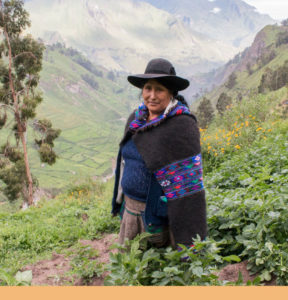Storage in Sand and Sprouting
How Triple S is helping sweetpotato farmers in Africa adapt to drought
Climate-resilient, nutritious, sweetpotato is perfectly placed to deliver food security and boost incomes even in the driest parts of sub-Saharan Africa which can receive as little as just four glasses of water every year. Triple S, an innovative seed system method developed by CIP, is helping sweetpotato farmers to have access to the right seeds, in the right place, and at the right time, ready for the rains to come.
The severity and duration of droughts around the world is increasing because of climate change. At least 1.5 billion people are affected including the 300 million people who depend on crops like sweetpotato, potato, and yam for their nutrition security and their livelihoods.
Sweetpotato is a popular and nutritious staple food around the world that is particularly suited to drought-affected areas. Once established it has little need for water. It also matures quickly and can thrive in poor soils. Its resilience is one of the reasons the International Potato Center selected orange-fleshed sweetpotato varieties as a tool to help reduce vitamin-A deficiency through a biofortification program that has, so far, reached seven million households, with the potential to reach millions more. Vitamin A deficiency currently affects the health and development of 140 million children globally, with a particularly high prevalence in sub-Saharan Africa and Asia.
However, despite all the benefits that sweetpotato brings to the table, one major constraint remains: Farmers lack timely access to quality seed.
“As rainfall patterns become more unpredictable, farmers need to be able to take advantage of whatever rain there is, as quickly as possible,” says Margaret McEwan, a senior scientist at CIP. “But they are not always able to get healthy planting materials at the time they need them. We designed the Triple S innovation package to help farmers conserve their seed supply through the long dry season, which can last several months. It is a gamechanger for food security as it means farmers can count on early harvests of this nutritious resilient crop.”
Store, Sand, Sprout
‘Storage in Sand and Sprouting’ – or Triple S – is a method developed by scientists at CIP to ensure that farmers can conserve sweetpotato roots during the dry season, so they can sprout and multiply quality vines just when they are needed. Through Triple S, each root produces around 40 cuttings. Households can also plant early which means the early availability of nutritious food, up to 30% higher yields, and 14% higher income from the sale of vines and roots compared to using conventional seed sources which need to be planted later due to the dry conditions. “The approach also needs to be flexible to work in different contexts,” continues McEwan. “For example, in Malawi, some families were eating the stored roots before the planting season arrived, so we adapted the Triple S method to store roots for consumption as well as for planting material.”
“Here in Tigray, we are using biofortified orange-fleshed sweetpotatoes to reduce the high vitamin-A deficiency levels in this area,” explains Mihiretu Cherinet, a CIP scientist based in Ethiopia. “The Triple S method is helping production, particularly in the really dry northern areas where we can wait as long as nine months for the rains to come. As a result, the Regional Bureau of Agriculture and Natural Resource Management is scaling out this work across the region to maximize the potential of sweetpotato to contribute to nutrition security as well as livelihoods.”
Sam Namanda, a CIP scientist based in Uganda, agrees. “Farmers here are now able to plant earlier, harvest earlier, and get better yields. They gain access and control over their planting materials. For example, in the humid central and southern regions, farmers can plant with the first rains and produce two, and in some cases three, harvests of sweetpotato in a single year, while farmers in the drier northern regions can get a decent harvest using this method.”
Start spreading the news
While CIP scientists were instrumental in developing the Triple S technology, they did not stop there. They worked with different development and government partners in the target countries to deploy innovative communication methods to spread word about its benefits through extensive radio and video campaigns, posters, leaflets, and demonstrations. The team wanted to ensure that information reached men and women, and people of all literacy levels.
“Feedback shows that women, in particular, appreciate face-to-face demonstrations and videos in local languages where other farmers explain and demonstrate to their peers how to use this root-based seed system and the early food and income benefits sweetpotato can bring,” explains Sarah Mayanja, working on Gender and Food Systems.
A network of Triple S champion households, such as Bezabih and Worke Hamamo, a farming couple from one of the dry southern regions in Ethiopia, is also proving critical to increasing adoption throughout their local communities. They oversee the storage of clean planting materials and their multiplication and distribution to farmers in their village and train other farming households how to do it for themselves. “Next season I will fill my farm, and my father’s farm, with sweetpotato,” says Bezabih.


